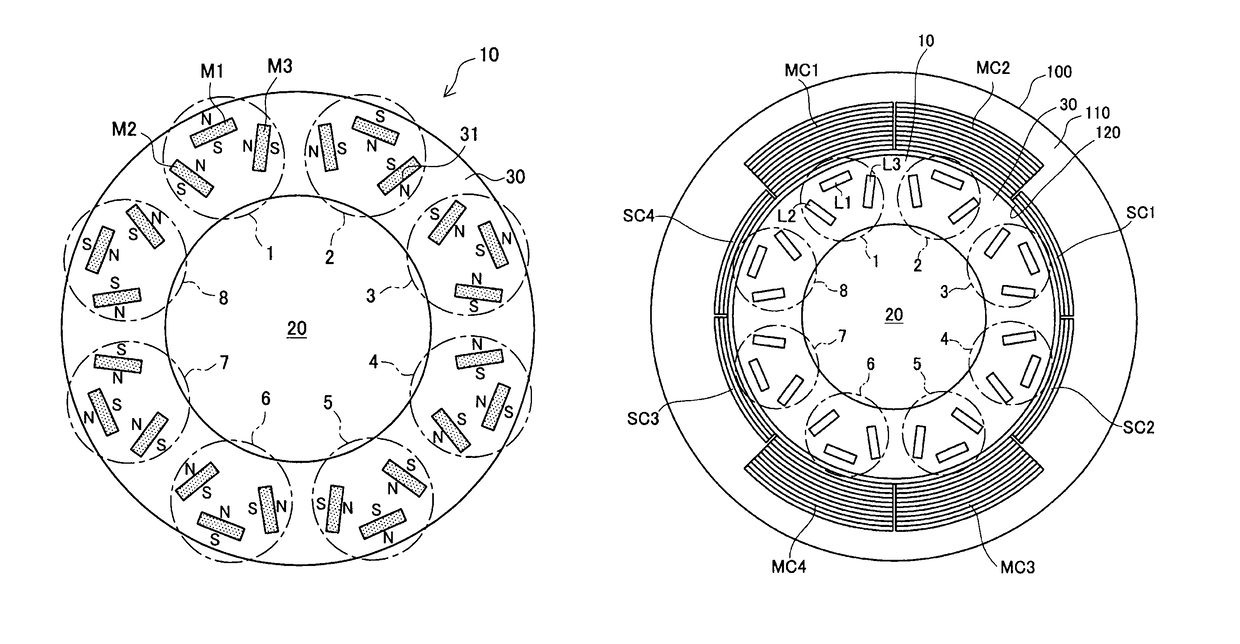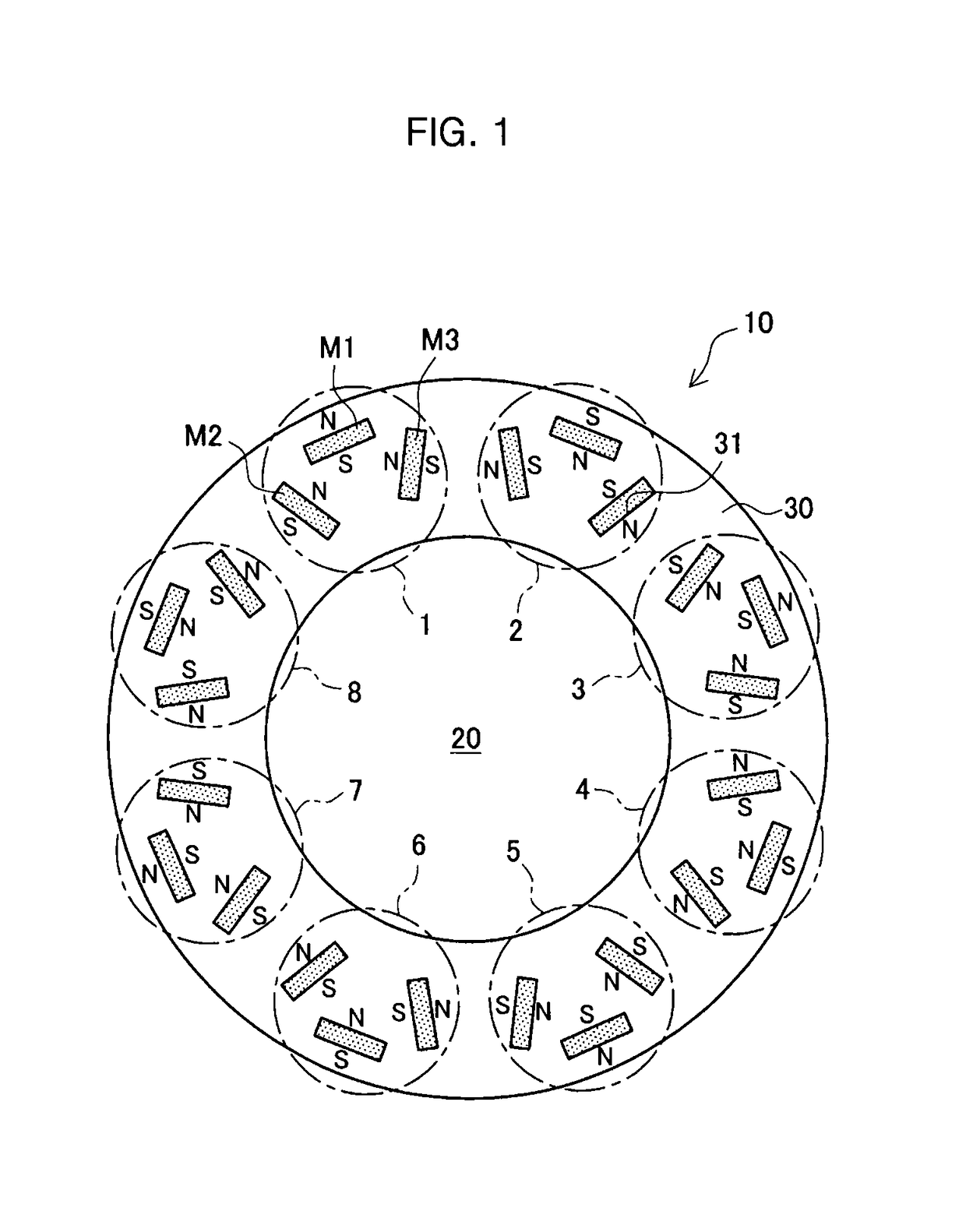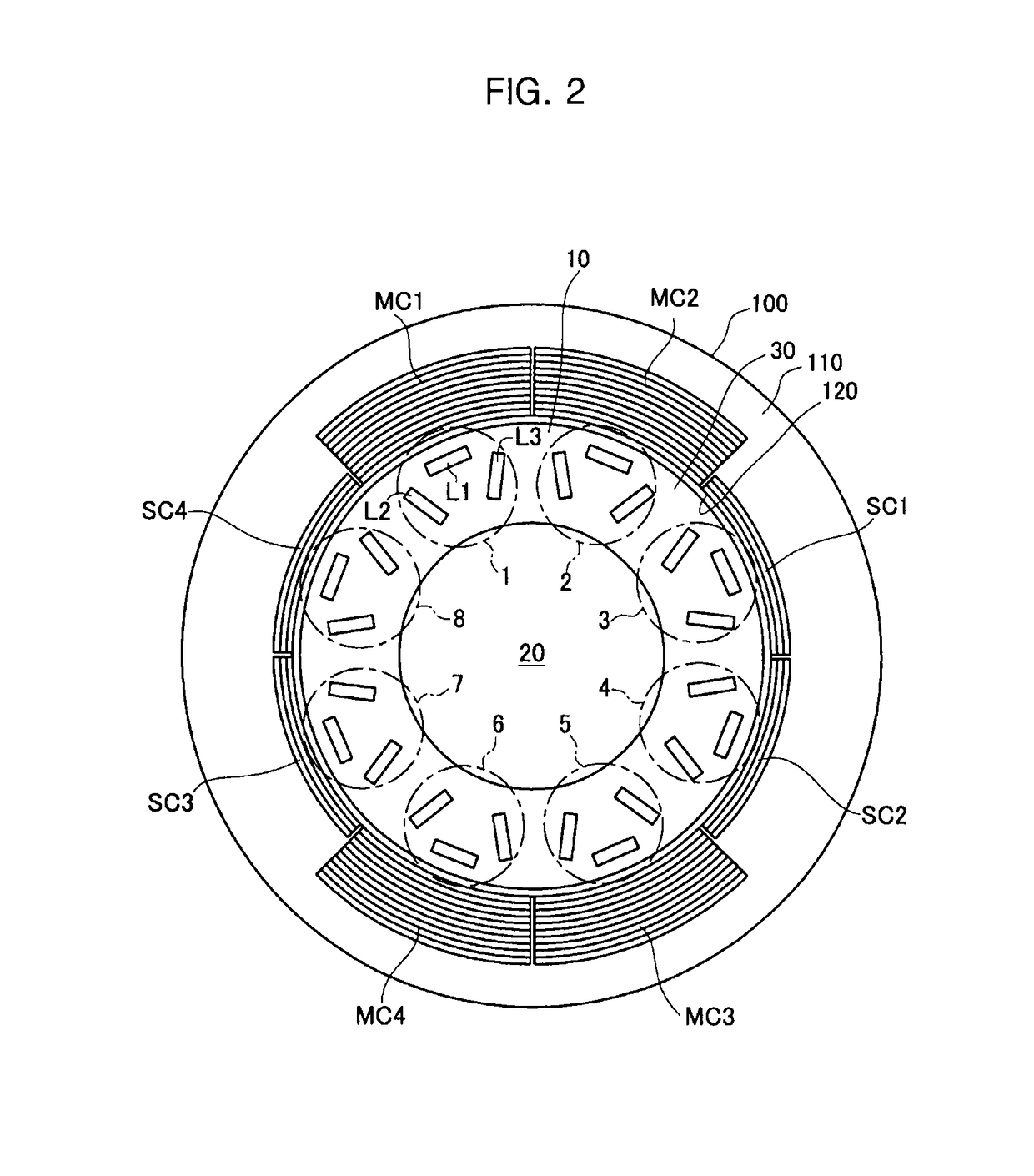Method of manufacturing rotor
a manufacturing method and rotor technology, applied in the field of manufacturing rotors, can solve the problems of difficult to completely prevent the sheets from being magnetized, difficult to manufacture a final product, difficult to etc., to achieve reliably prevent the respective magnet materials from being magnetized, easily magnetize the plurality of magnet materials, and reliably control the strong magnetic field
- Summary
- Abstract
- Description
- Claims
- Application Information
AI Technical Summary
Benefits of technology
Problems solved by technology
Method used
Image
Examples
first embodiment
[0033]First, a rotor manufactured by the method of manufacturing the rotor according to the embodiment will be described. FIG. 1 is a schematic top view of the rotor 10 according to the embodiment. As shown in FIG. 1, the rotor 10 is configured by assembling a rotor core 30 to the outer periphery of a shaft 20. In addition, a plurality of magnets M1, M2, M3 are assembled in the rotor core 30. Specifically, as indicated by a dashed line in FIG. 1, the rotor core 30 has eight groups from group 1 to group 8, each of which is configured of one magnet M1, one magnet M2 and one magnet M3.
[0034]The rotor core 30 is formed by laminating a plurality of electromagnetic steel sheets in a depth direction in FIG. 1. Moreover, holes are formed at the same positions in the laminated electromagnetic steel sheets, and a plurality of slots 31 are formed in the rotor core 30 by overlapping the holes. Thus, the magnets M1, M2, M3 are mounted in each slot 31 of the rotor core 30.
[0035]The magnets M1, M2...
second embodiment
[0084]Next, a second embodiment will be described. In this embodiment, the rotor to be manufactured is the same as the rotor of the first embodiment shown in FIG. 1. In the present embodiment, a magnetizing process of a magnetization device that is different from that of the first embodiment is used. Specifically, the magnetization device with the number and arrangement of the main coils and sub coils that are different from those of the first embodiment shown in FIG. 2 is used in the magnetizing process of this embodiment.
[0085]FIG. 8 shows a magnetization device 200 that is used in the magnetizing process of the second embodiment. The magnetization device 200 includes a core portion 210, main coils MC1, MC2, MC3, and sub coils SC1, SC2. In this embodiment, when it is not particularly distinguished between the main coils MC1, MC2, MC3, they are referred to as main coils MC, and when it is not particularly distinguished between the sub coils SC1, SC2, they are referred to as sub coi...
PUM
 Login to View More
Login to View More Abstract
Description
Claims
Application Information
 Login to View More
Login to View More - R&D
- Intellectual Property
- Life Sciences
- Materials
- Tech Scout
- Unparalleled Data Quality
- Higher Quality Content
- 60% Fewer Hallucinations
Browse by: Latest US Patents, China's latest patents, Technical Efficacy Thesaurus, Application Domain, Technology Topic, Popular Technical Reports.
© 2025 PatSnap. All rights reserved.Legal|Privacy policy|Modern Slavery Act Transparency Statement|Sitemap|About US| Contact US: help@patsnap.com



